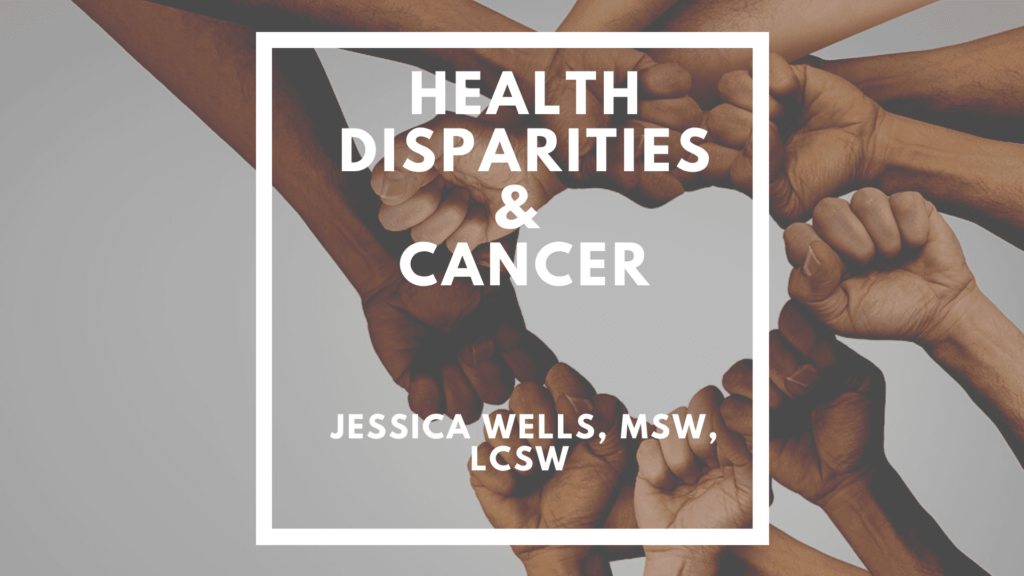Cancer Disparities
Unequal Burden: Comprehending Disparities in Cancer
Worldwide, cancer continues to be the primary cause of mortality. Nonetheless, not everyone is fighting this illness equally. There are notable differences in cancer incidence, outcomes, and therapy depending on geographic location, racial/ethnicity, and socioeconomic status. Let’s investigate these differences more thoroughly and look at possible fixes.
Table of Contents

Differences in Socioeconomic Status
Cancer Disparities
Individuals with lower socioeconomic level (SES) frequently have a greater cancer incidence. Among the elements causing this discrepancy are:
- Limited access to healthcare: People with lower incomes could not have health insurance or might have financial difficulties that keep them from getting timely treatment, diagnostic testing, and preventative screenings.
- Lifestyle factors: Higher rates of smoking and alcohol consumption, unhygienic living conditions, and restricted access to healthful foods are all associated with lower socioeconomic status (SES) and raise the risk of cancer.
- Lower health literacy: Knowledge of cancer risk factors and preventive techniques may be hampered by limited access to resources and education.
Ethnic and Racial Divides
Cancer Disparities
The incidence of cancer is thus disproportionately high among racial and ethnic minorities. Among the major causes of this discrepancy are the following:
- Biological differences: Genetic variations may affect a population’s susceptibility to a particular malignancy or the efficacy of a treatment.
- Social determinants of health: Poverty, housing inadequacy, and exposure to environmental pollutants are only a few of the structural disadvantages that racial and ethnic minorities frequently experience. These factors have an impact on health outcomes.
- Cultural beliefs and access: People may find it difficult to grasp treatment alternatives or seek preventive care due to cultural attitudes or language obstacles.
- As an illustration: Even when detected at the same stage, Black Americans die from a number of cancers at higher rates than White Americans. Similar to this, linguistic obstacles or cultural stigma may cause delays in diagnosis for Asian and Hispanic populations.
Regional Inequalities
Cancer Disparities
Geographical location can also affect cancer incidence, treatment, and survival rates. This is the reason why:
- Access to facilities and specialists: A lack of oncologists, as well as restricted access to advanced diagnostic instruments and specialised cancer care centres, may exist in rural locations.
- Environmental factors: Certain areas have a higher risk of cancer due to exposure to environmental chemicals found in the air, water, or soil as a result of pollution or industrial activities.
- Public health resources: The total cancer burden of a community can be affected by differences in the public health system’s infrastructure and availability of cancer preventive programmes.
The Effects of Inequalities
Cancer Disparities
Vulnerable populations suffer from worse health outcomes as a result of these discrepancies. This comprises:
- Increased cancer incidence: Decreased survival rates and later-stage diagnoses can result from factors including restricted access to preventive screenings.
- therapy delays: The likelihood of a successful intervention can be decreased when individuals put off seeking therapy due to financial constraints or a lack of knowledge.
- Increased mortality: Among underprivileged groups, cancer death rates are greater due to all of these variables.
Filling the Void: Resolving Cancer Inequalities
Cancer Disparities
In order to address cancer disparities, multiple strategies must be used:
- Increasing access to healthcare: Increasing the number of people who have health insurance, offering financial aid for medical treatment, and setting up mobile screening clinics can all help people get the care they need.
- Outreach and education in the community: It is imperative to implement cancer education programmes that are culturally sensitive, raise awareness in minority communities, and solve language challenges.
- Investing in research: To comprehend the biological underpinnings of racial and ethnic differences and create focused solutions, more research is required.
- Taking socioeconomic determinants of health into account: Access to nutritious food, better housing conditions, and policies aimed at reducing poverty can all have a big impact on people’s general health.
Cancer Disparities
We can endeavour to guarantee that every individual, irrespective of background or zip code, has access to early detection, efficient treatment, and an increased likelihood of surviving cancer by striving for a more equal healthcare system.


